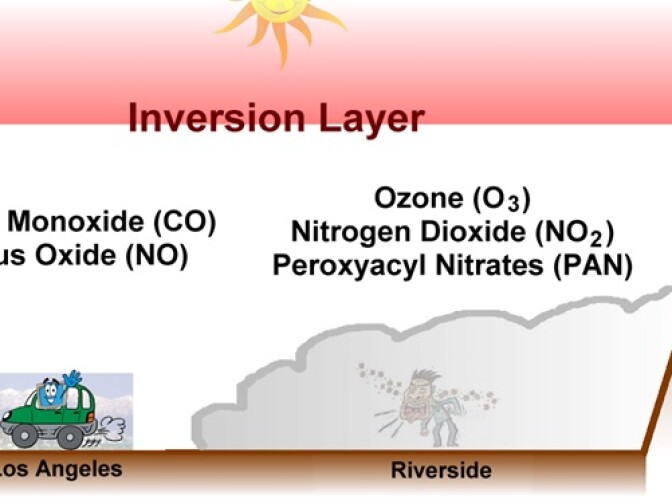Truth matters. Community matters. Your support makes both possible. LAist is one of the few places where news remains independent and free from political and corporate influence. Stand up for truth and for LAist. Make your year-end tax-deductible gift now.
This archival content was originally written for and published on KPCC.org. Keep in mind that links and images may no longer work — and references may be outdated.
What's behind the record-breaking stretch of 'no burn' days?
Thursday is the 11th day in a row that you cannot burn wood in your fireplace, backyard fire pit or anywhere else in urban Southern California. It's called a "no burn" day, and this winter the region has already hit a record number of them.
Since the “no burn” program started in 2012, the South Coast Air Quality Management District has never issued more than eight alerts in a row. The agency sends out an alert when it predicts particulate matter levels will be above federal standards.
Although it doesn’t seem lighting a fire in your fireplace will make a big difference to regional air quality, it can. The AQMD estimates a million households around the South Coast use their fireplace every day, sending more pollution into the air than all the power plants in the area combined. The particulate matter in wood smoke can lodge deep inside the lungs or pass into the blood stream, causing inflammation and exacerbating underlying conditions like asthma, heart disease and other chronic diseases.
The Purple Air network of air sensors displays particular matter concentrations in real-time. Orange is unhealthy for sensitive groups and red is unhealthy for everyone.
The reason this winter been so bad has to do with the weather. A big high pressure system has been sitting on top of Southern California, keeping storms out and locking warm, dry air in place. That air acts like a lid over the L.A. basin, trapping pollution against the Santa Monica, San Gabriel and San Bernardino mountains. Wind blowing off the ocean further pushes the pollution up against the mountains.
“The idea with air pollution is you want to disperse it, you want to mix it with clean air,” said Ryan Kittell, a forecaster with the National Weather Service in Los Angeles. “In Southern California, we’re boxed in and we can’t get clean air to mix with our polluted air.”

A low pressure system would release the “lid” on the box, allowing pollution to escape. That could also bring rain, which cleans the soot, smoke and other particles out of the air as it falls to the ground.
“A lot of the time after it rains, the visibility is really, really good,” Kittell said.
But without storms, air pollution can build up over days and weeks. And this winter has been historically dry. According to Kittell, it is the fourth driest start to the winter since the National Weather Service began keeping track in 1877. The region has had no significant precipitation since February 17, 2016, when it rained just over two inches.
Clarification: An earlier version of this story left out some specifics about the areas affected by the order.









